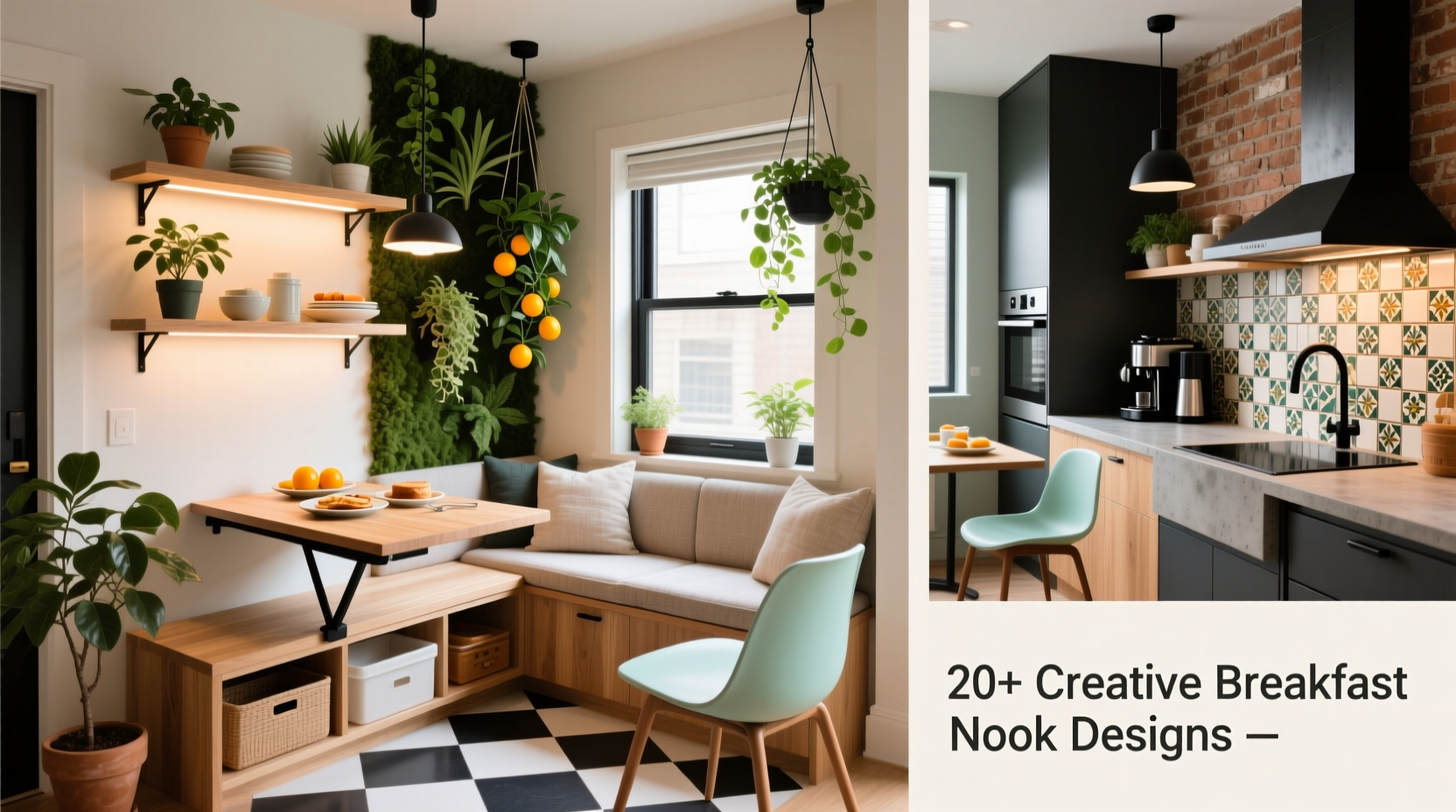A breakfast nook is a little corner where time slows down. You don’t need much, just a seat, a table, and maybe a bit of sunlight sneaking in. The funny thing is, people remember meals in nooks longer than in dining rooms. Probably because it feels personal.
Let’s talk about designs. Not the boring catalog ones. But nooks that actually feel alive, places where you’d want to sip coffee even on a rushed Tuesday. These 20+ ideas aren’t just about furniture—they’re about creating a small daily ritual. Something warm, something memorable.
1. Window Bench with Cushions that Never Match
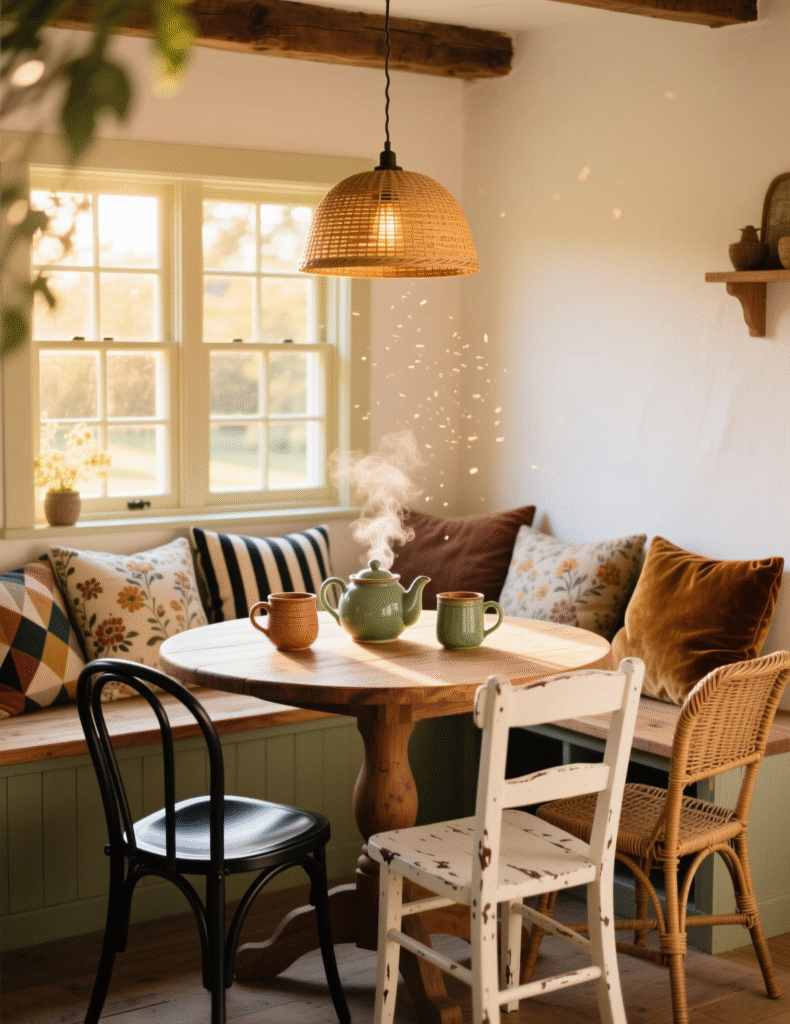
There’s magic in a window seat. Sunlight pours in, you’ve got a plate of eggs, and suddenly the world outside feels like part of your breakfast. Add cushions, but don’t match them perfectly. A floral pattern next to a faded stripe feels more real than a showroom set.
A nook by the window makes ordinary mornings feel cinematic. The clink of a spoon, the hum of the street, and your own little corner of comfort. That’s the kind of design that sticks.
2. Round Table, Tucked in a Corner
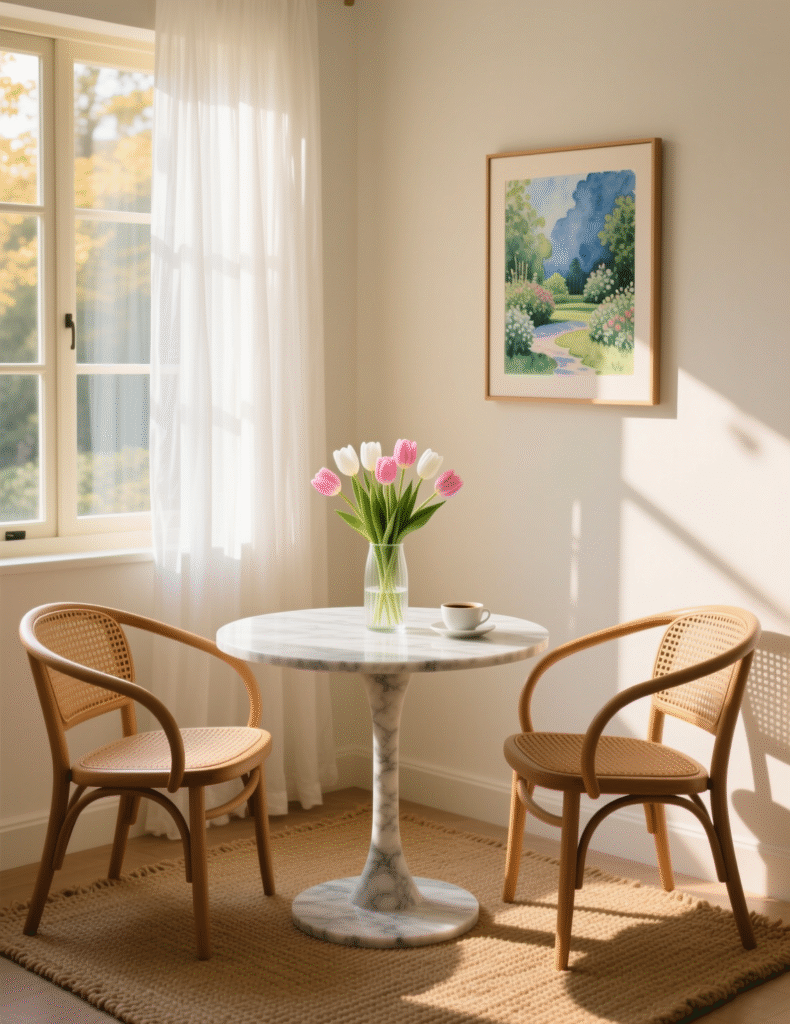
Corners beg for round tables. They just do. A round shape softens the space and makes you lean in closer. Coffee cups practically touch without effort.
Pair it with two chairs and maybe a stool. Suddenly you’ve created a tiny stage for conversation. The round table doesn’t dominate—it whispers, and that’s better.
3. Banquette Seating Like a Diner
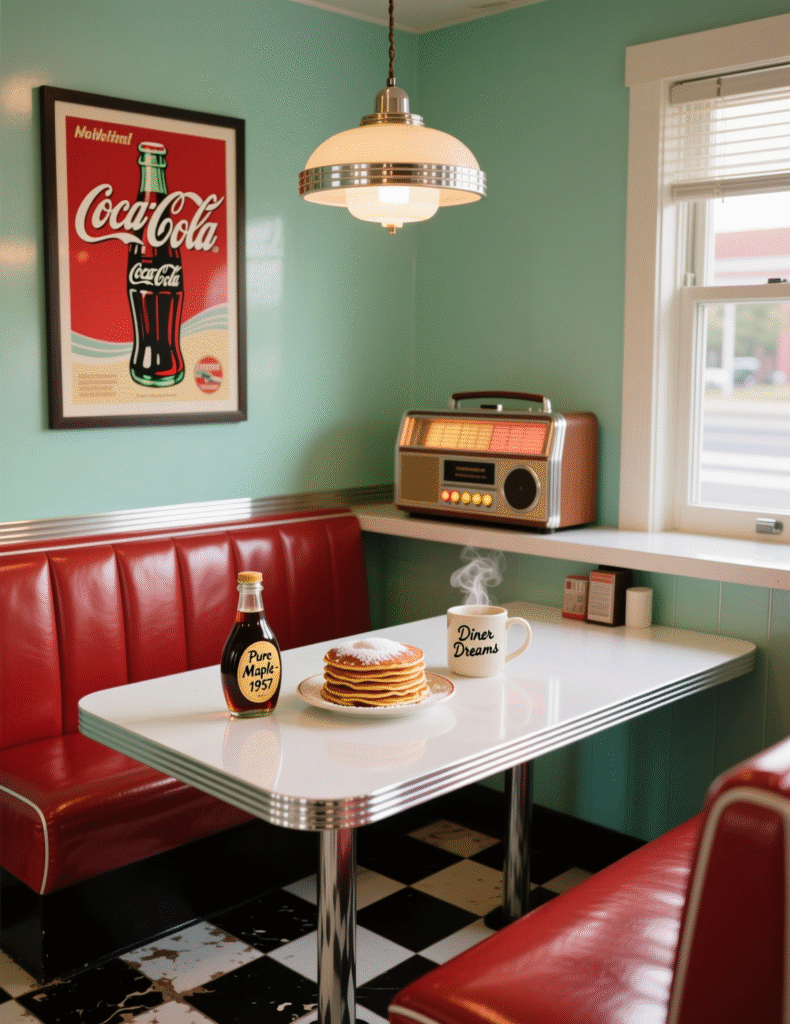
Banquettes bring nostalgia. They remind you of booths in diners, only less sticky. You can build them right against the wall and slide a table in front. Efficient, cozy, and oddly satisfying.
If you go this route, add storage beneath the seats. Nobody regrets hidden storage. That’s where the Christmas mugs and old cookbooks live quietly.
4. Plants Crawling All Over the Nook
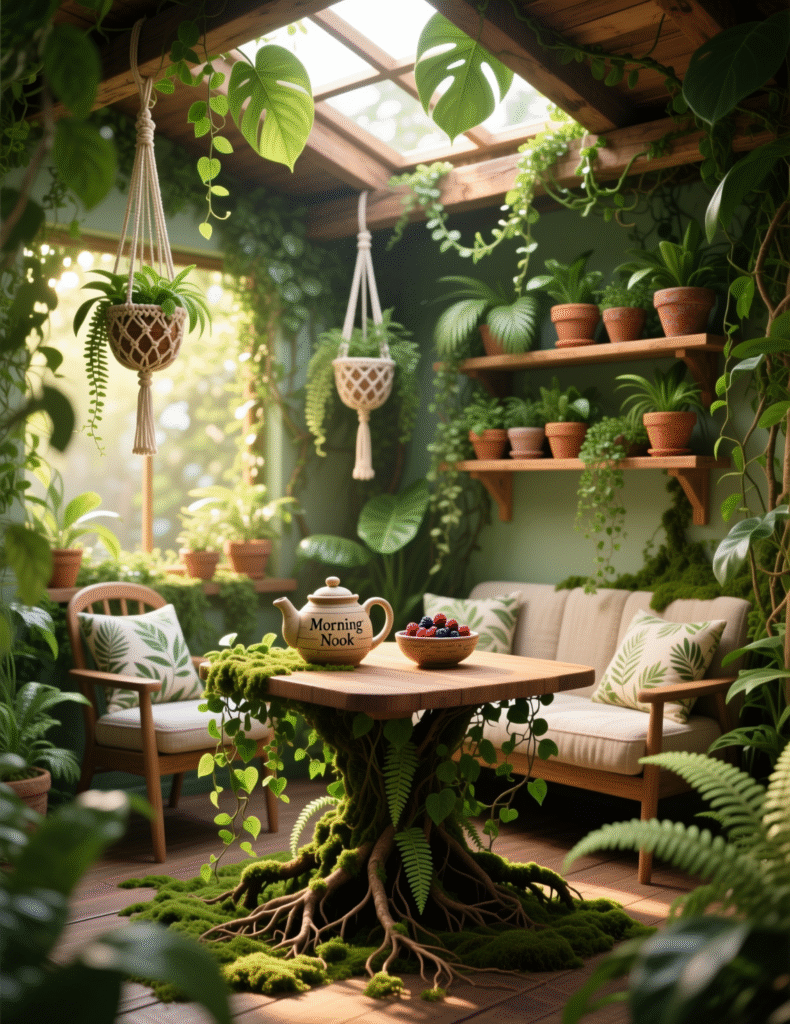
Plants don’t just decorate; they breathe with you. A nook framed by vines, small pots, or even one dramatic fiddle-leaf fig feels alive. Breakfast with greenery makes the air lighter, literally.
Herbs work too. Imagine cutting fresh mint for your tea right from the nook’s windowsill. That’s design that doesn’t just sit pretty—it participates.
5. Fold-Down Table, for Tiny Spaces
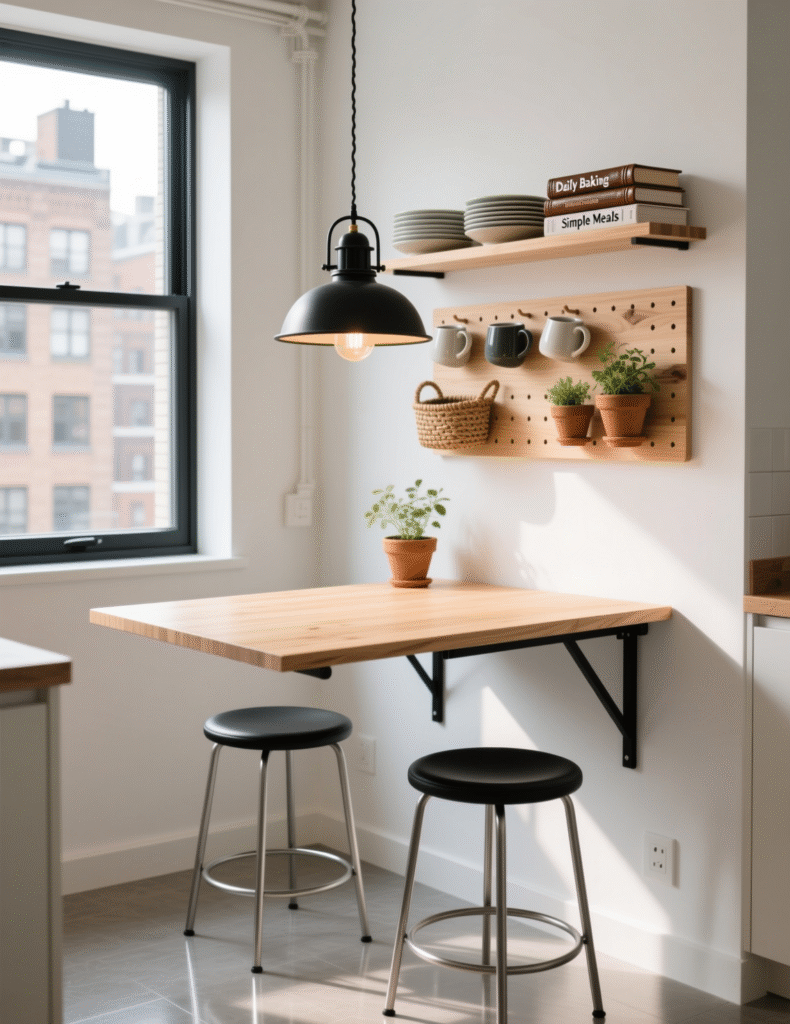
Small kitchens groan under the weight of bulky furniture. Enter the fold-down table. Attached to the wall, it flips open only when needed. Clever, almost sneaky.
Pair it with two stools that can tuck away. It’s not grand, but it’s honest. A nook that disappears when life needs the space back. That’s creative thinking.
6. Rustic Wood and Worn-In Charm
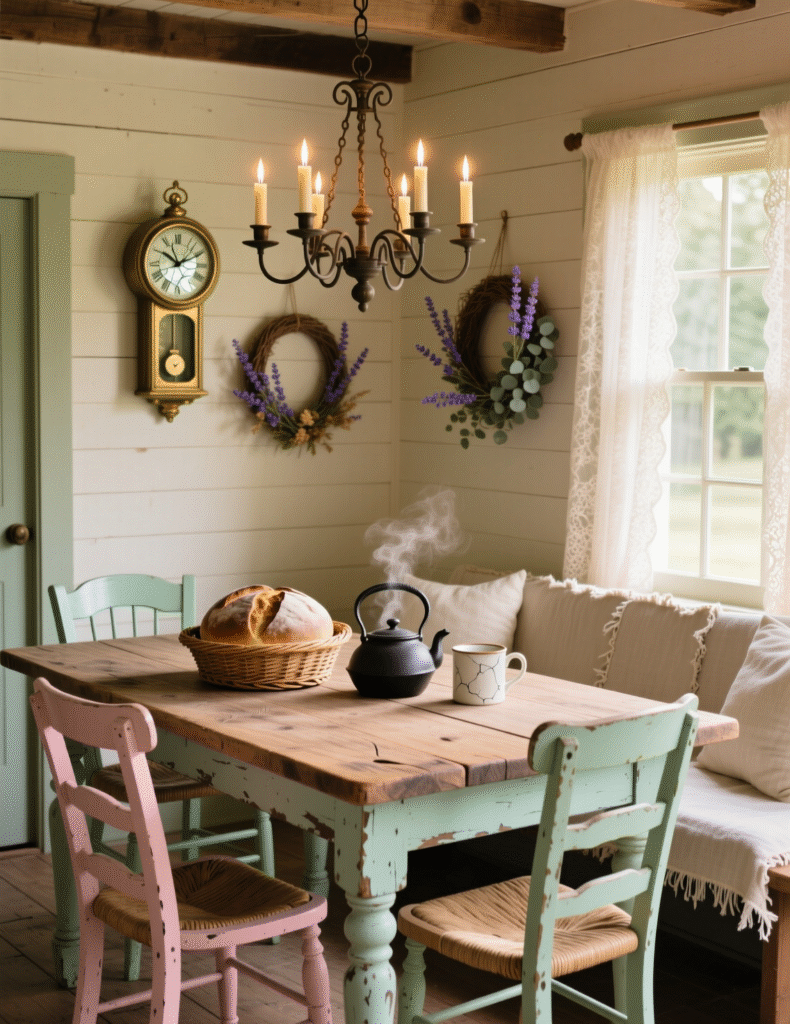
Breakfast feels different on a table with scratches and history. Rustic wood, a bit uneven, tells stories. Maybe it was once a farm door, or maybe just an old flea market find. Either way, it adds warmth no new material can fake.
Add mismatched chairs. One painted, one plain. Perfection is overrated in nooks. Imperfection tastes better with jam on toast.
7. Built-In Bookshelves Beside the Table
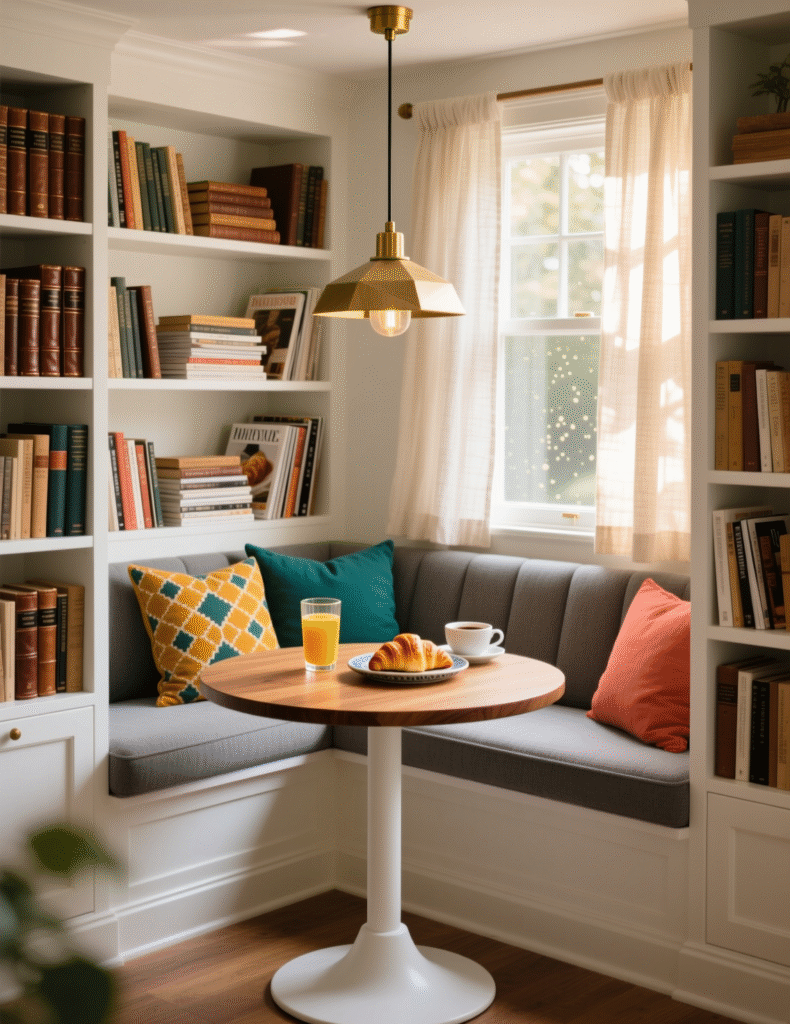
Some mornings you want eggs. Other mornings you want a book. Why not have both? Shelves built right into the nook wall make it easy to grab a novel or a recipe.
Imagine flipping through a cookbook while butter melts on the pan. That’s the beauty of mixing dining and reading. It makes breakfast less rushed, more layered.
8. Bright Colors that Wake You Before Coffee
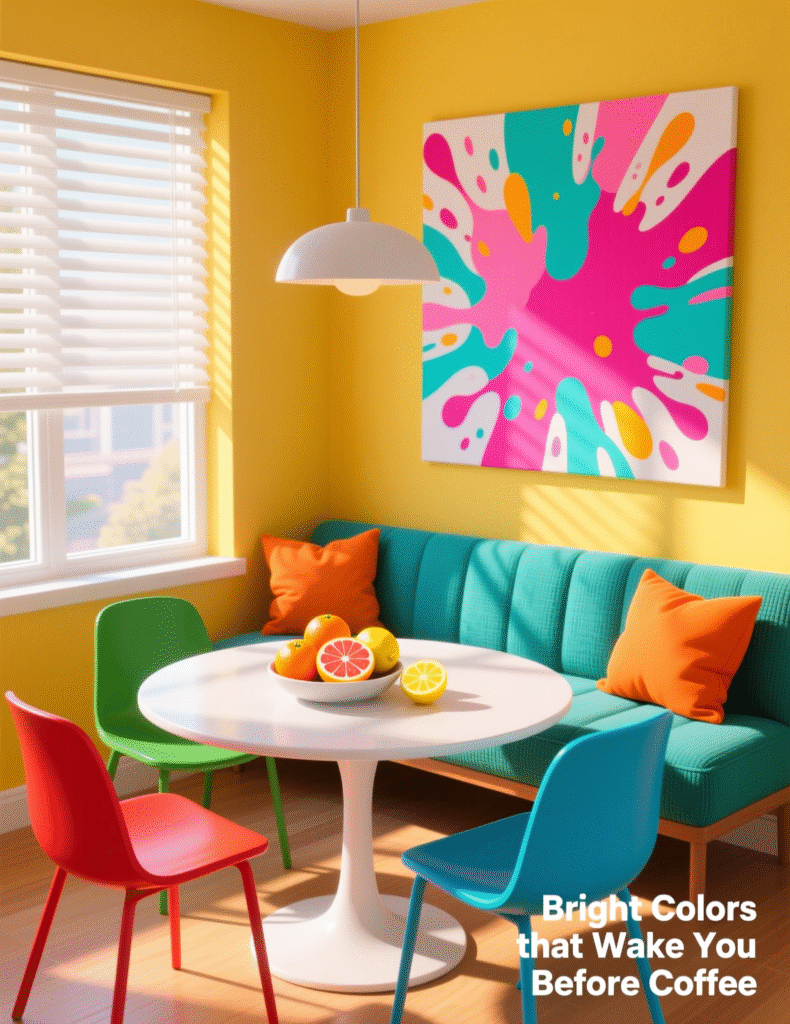
Not every nook needs to be soft beige. Paint one wall a bold yellow or teal. Hang a loud piece of art. Let the nook wake you up before caffeine does.
Color is mood. A bright nook tells you mornings are meant to be celebrated, not tolerated. You can’t be grumpy in a cheerful corner—it’s almost impossible.
9. Minimalist, Barely-There Nook
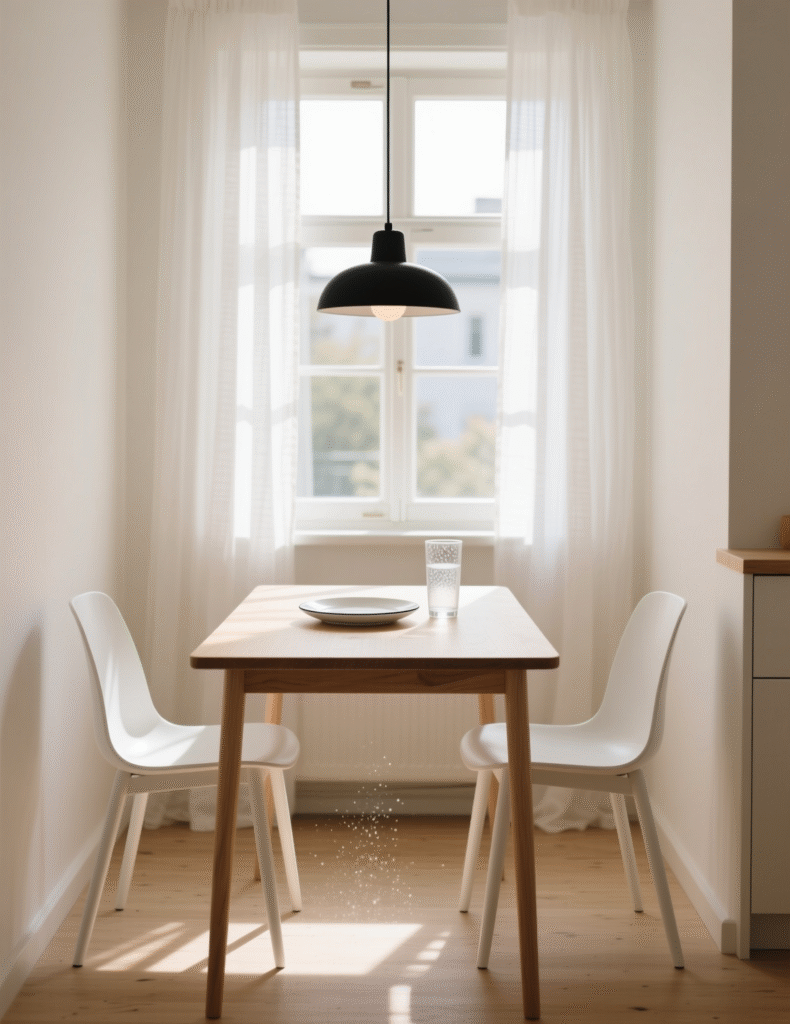
Sometimes creativity is restraint. A plain wooden bench, a narrow table, and one pendant light. That’s it. A nook stripped to essentials feels calm, like breathing space.
Minimalist nooks don’t distract. They focus you. A sip of coffee, a bite of toast, and the simplicity of not being crowded by clutter. It’s design for quiet souls.
10. A Nook That Doubles as Work Space
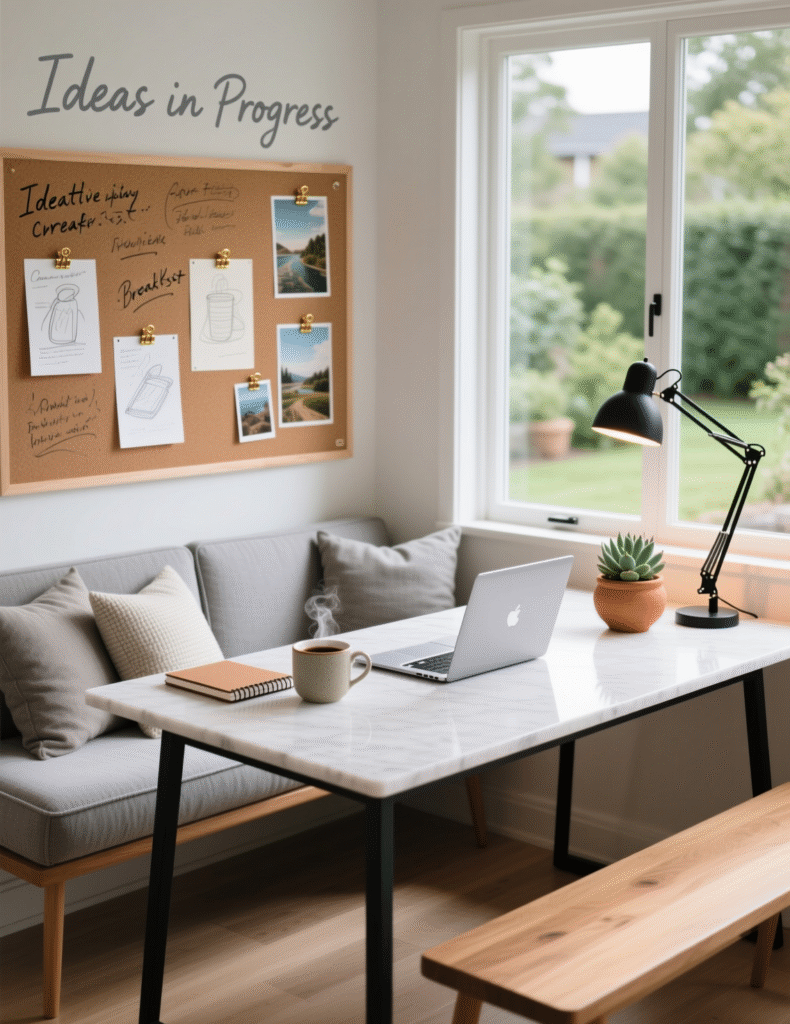
In real life, breakfast nooks often pull double duty. They become laptop stations, homework desks, or planning corners. Embrace it. Build a nook with outlets nearby. Make sure the table is wide enough for both cereal bowls and notebooks.
It’s not cheating—it’s smart. A nook that shifts with you is more useful than a dining table nobody uses. Function is the secret spice of good design.
11. Skylight Breakfast Nook
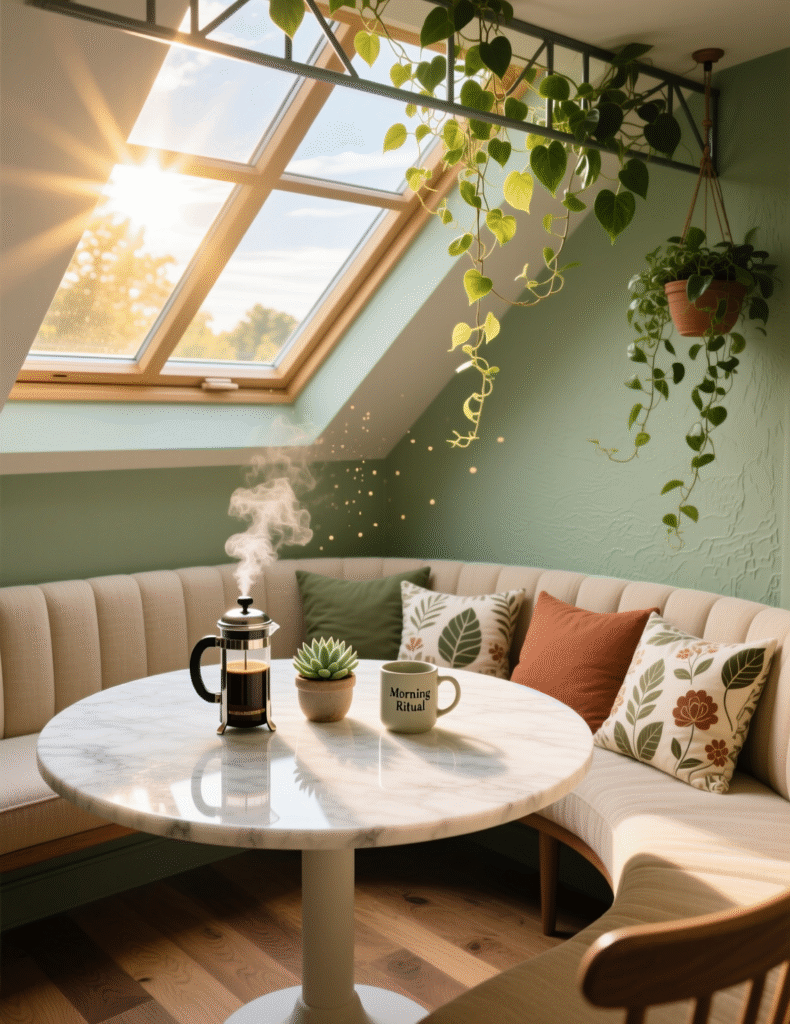
Imagine sitting under a skylight with sunlight dripping straight down onto your plate. It’s like eating in a quiet greenhouse without the bugs. Mornings feel bigger when the sky joins the table.
Rain on the glass makes breakfast sound like music. That’s not decor—that’s poetry.
12. Nook with a Swing Chair
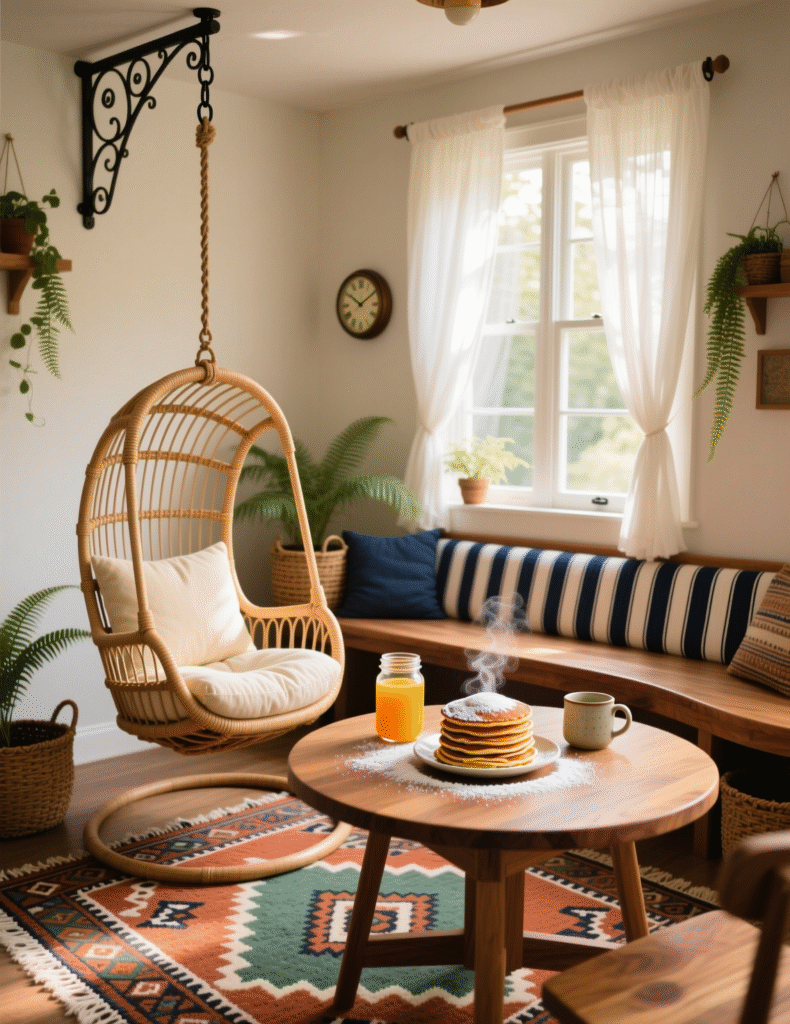
Forget stiff chairs. Picture a swing chair or a hanging bench in your nook. A soft sway while sipping tea feels a little rebellious for breakfast.
It’s half play, half comfort. Kids love it. Adults secretly love it more.
13. Fireplace Breakfast Nook
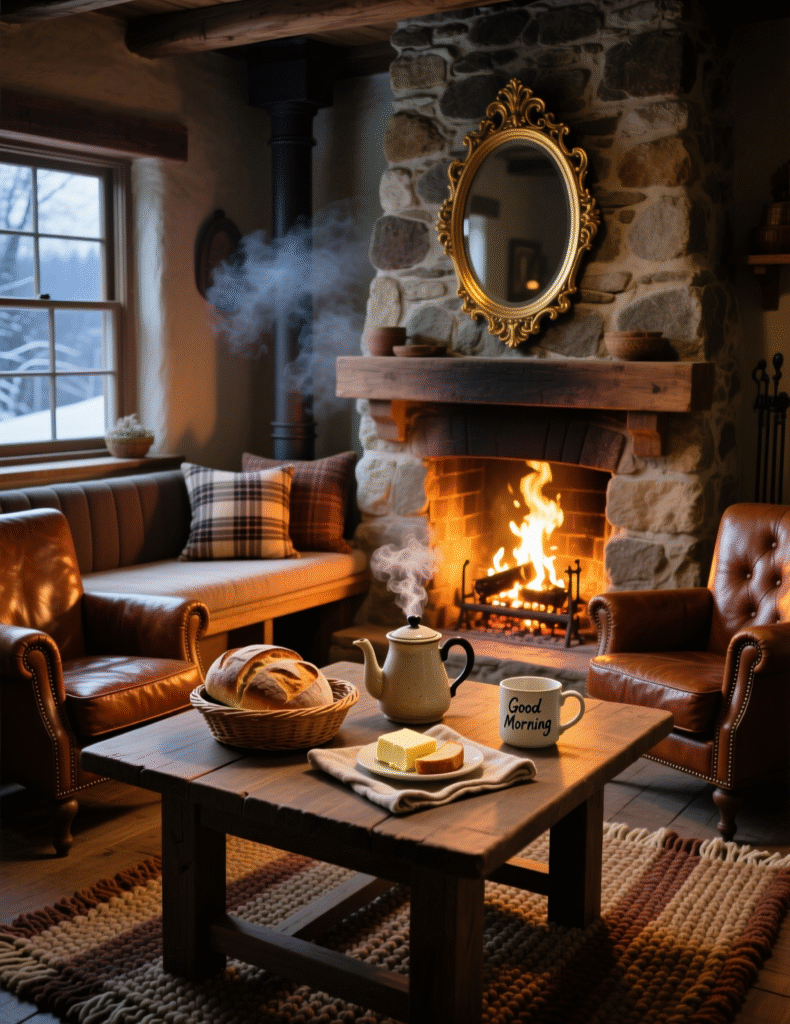
A small table near a fireplace turns winter mornings into storybook scenes. Crackle, warmth, and the smell of coffee blending with wood smoke. Honestly, that’s better than any hotel breakfast buffet.
It’s not about grandeur—it’s about heat you can feel on your knees while butter melts on toast.
14. Glass-Walled Nook Overlooking a Garden
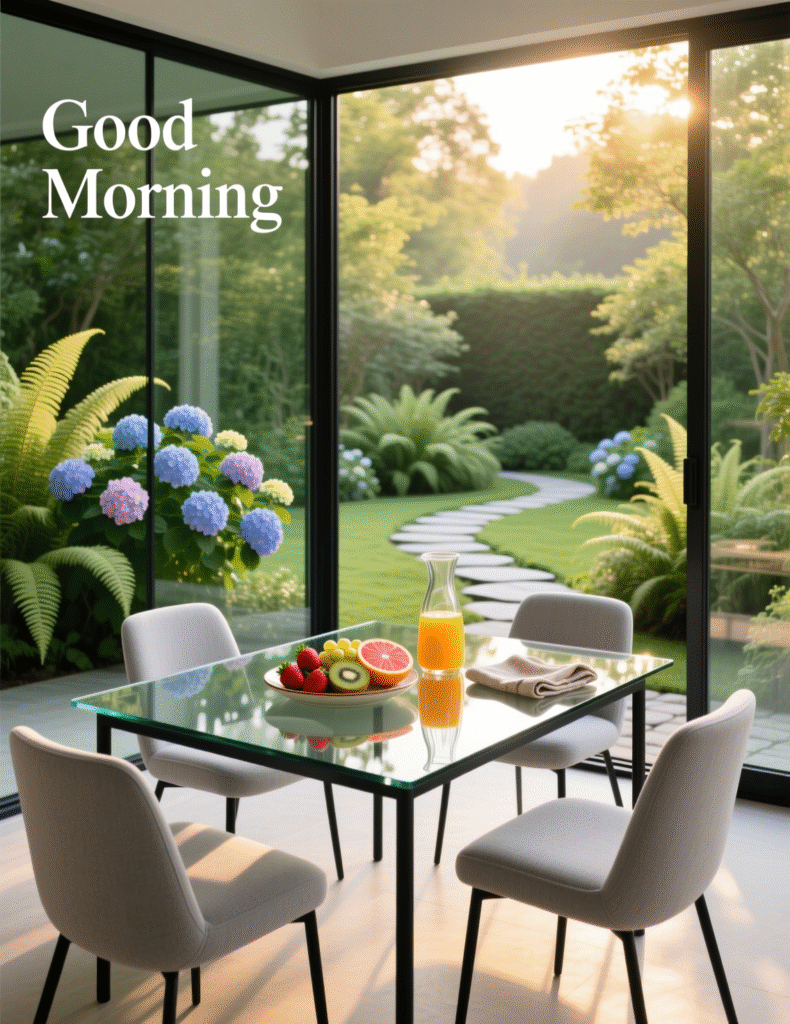
This one is for those with a view. A glass wall lets your garden sneak into breakfast. Roses, ivy, or just plain grass—it all feels different when you’re eating with it.
Season changes become part of the design. Summer green, autumn gold, winter frost—they decorate for you.
15. Hidden Alcove Nook
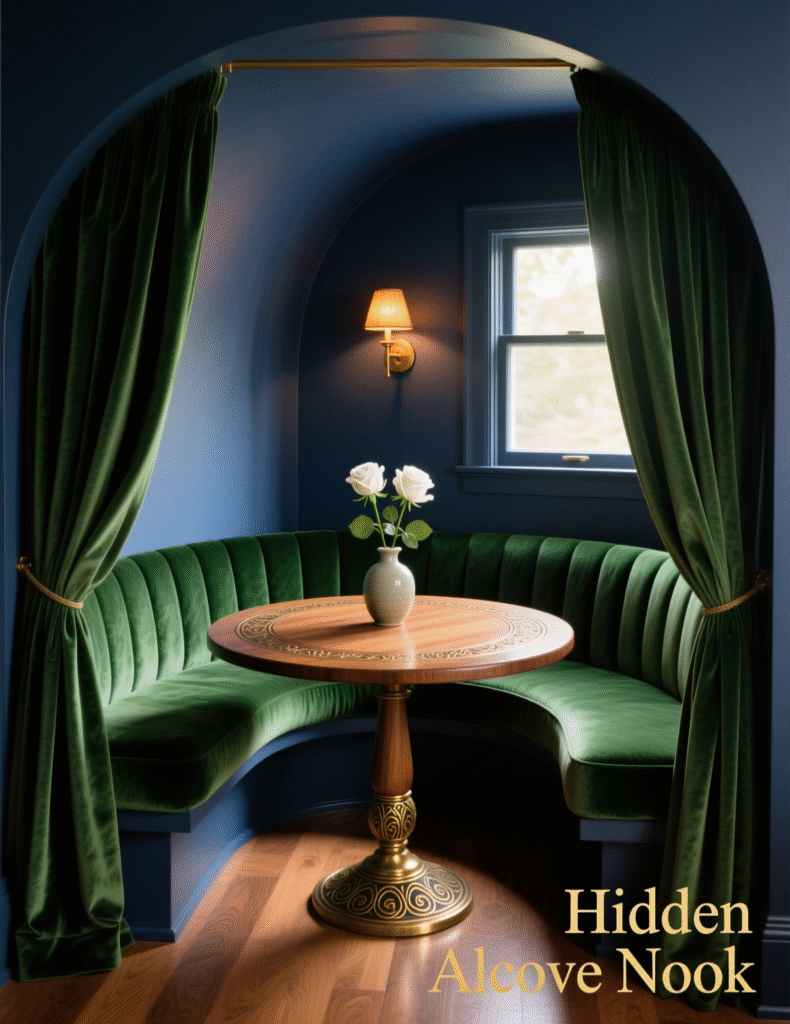
Not every nook wants to be obvious. Tuck one into a hallway corner, or inside a niche most people overlook. Hidden spaces feel like secrets.
It’s a place you slip into, quietly. Breakfast becomes a small escape, even if you’re still at home.
16. Lofted Breakfast Nook
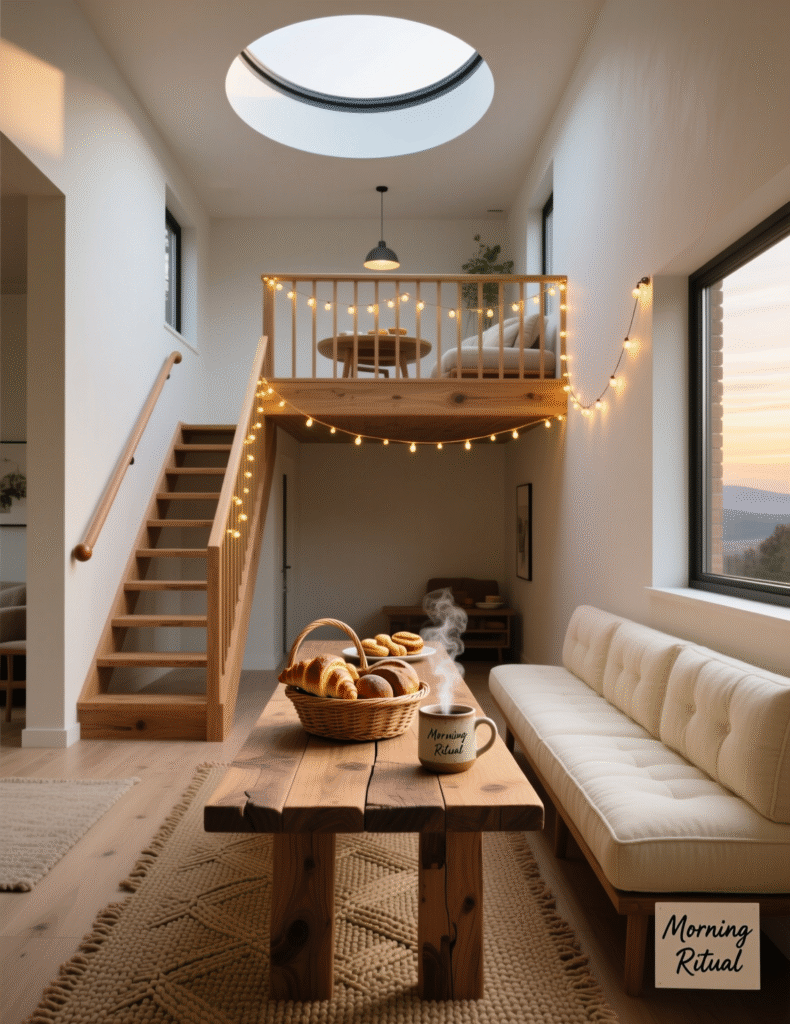
If you’ve got high ceilings, build a small loft above the kitchen. A ladder up, and suddenly you’re eating toast in a treehouse for grown-ups.
It changes how mornings feel—like you’ve stolen extra space the house didn’t know it had.
17. Industrial Metal and Concrete Nook
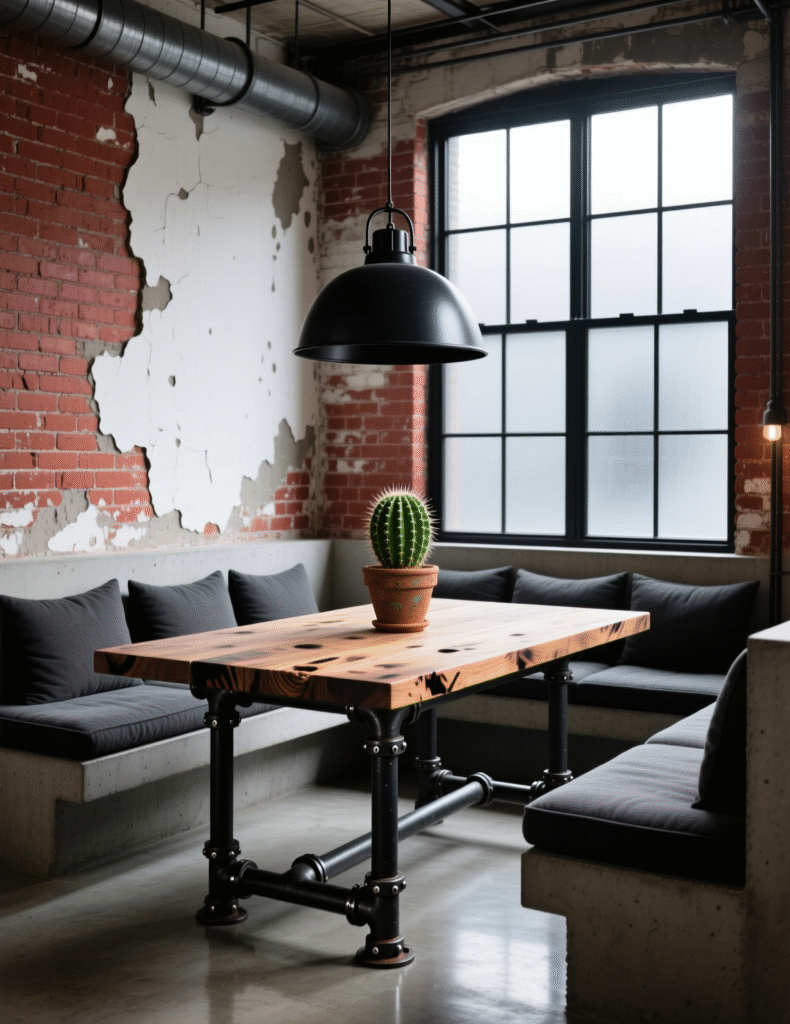
Not every nook has to be soft. Exposed concrete walls, a steel table, maybe a reclaimed factory stool. Harsh? Sure. But also striking.
Pair it with warm lighting and suddenly the industrial turns inviting. Breakfast feels edgy, like a café tucked in a city corner.
18. Nook with a Built-In Chalkboard Wall
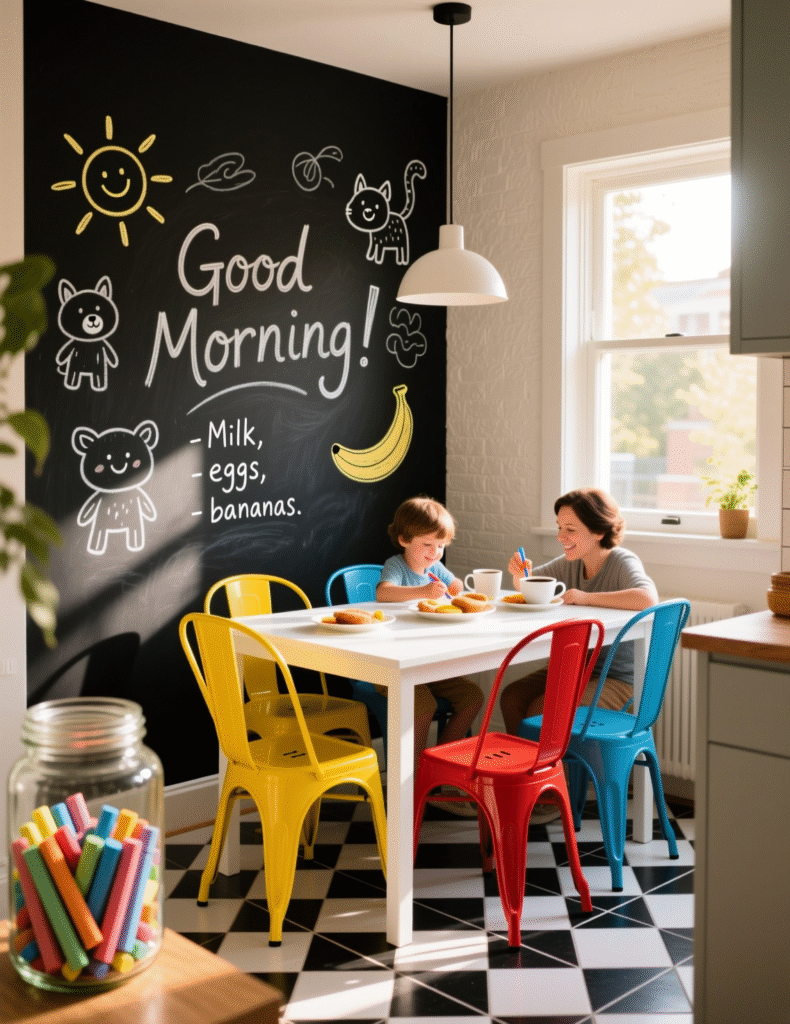
Let people write on the wall. Grocery lists, doodles, “don’t forget the milk.” Breakfast becomes interactive. Kids draw, adults scribble reminders, guests leave funny notes.
The wall changes daily. It’s not static design—it’s alive, scribbled, erased, and written again.
19. Nook Wrapped in Curtains
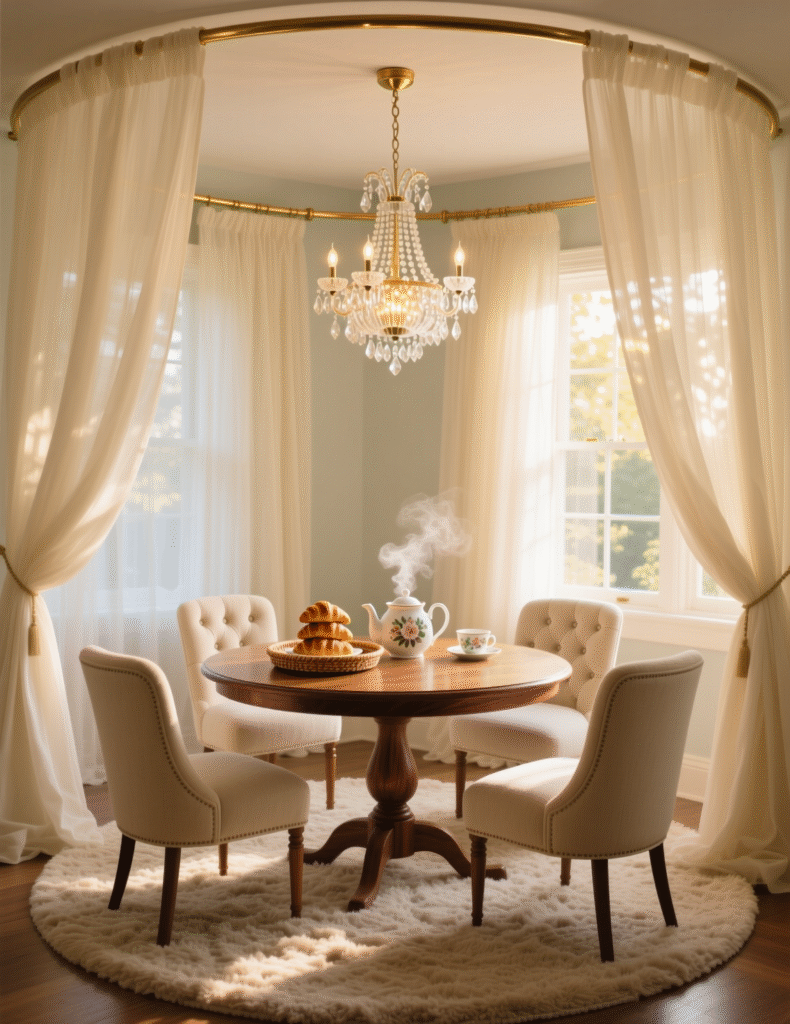
Think of a nook framed with drapery. Pull them closed, and you’ve got a private little cocoon for oatmeal and coffee. Open them, and the room rejoins you.
It feels theatrical. Breakfast behind curtains, like a stage that opens and closes with your mood.
20. Outdoor-Inspired Nook with Stone and Wicker
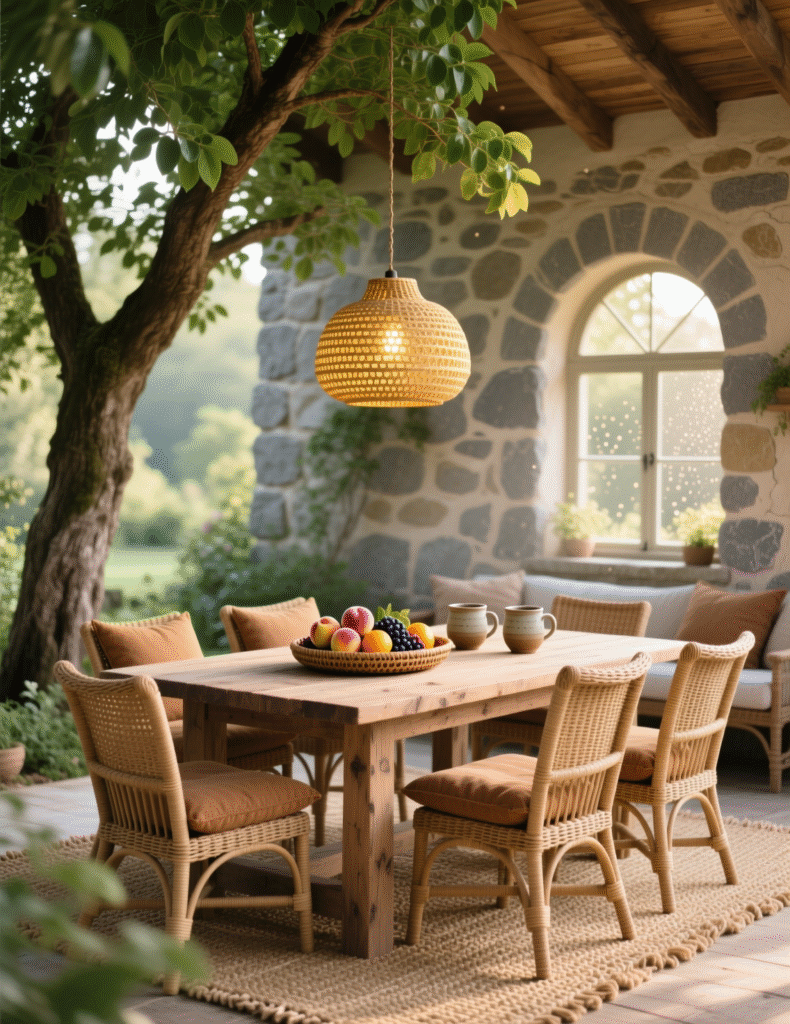
Bring the patio inside. Stone wall accents, wicker chairs, maybe a woven rug underfoot. Breakfast tastes different when your nook whispers “outdoors.”
Even in the dead of winter, you’ll feel like you’re half outside, half inside. A clever trick, really.
Final Thoughts
Now, let’s stitch these ideas into something bigger. Because the truth is, a breakfast nook isn’t only about design. It’s about habit. It’s the place where families argue over the last pancake, or where one person sits alone scrolling the news. Both are valid.
The best nooks feel a little messy. A pen left on the seat. A plant that leans too far. A cushion someone spilled syrup on months ago. These details are part of the design, even if you didn’t plan them. That’s what makes the space human.
When you’re building a nook, think small. Really small. Don’t try to replicate Pinterest perfection. Instead, ask: where do I naturally pause in the morning? That’s your nook. It could be by the fridge, under a staircase, or squeezed beside a back door. Creativity is less about fancy furniture and more about noticing what’s already there.
Lighting is another overlooked hero. A soft pendant above the table can make toast look like a feast. Or use a lamp with a warm glow. Harsh overhead lighting ruins breakfast, almost as much as burnt coffee.
Chairs and benches matter too. Comfort is underrated. If the seat isn’t cozy, you’ll leave the nook faster than your tea can cool. Throw in a pillow, even if it doesn’t match. Especially if it doesn’t match.
For some, breakfast is a rushed ritual. For others, it’s sacred. Either way, the nook adapts. It’s a flexible little theater where daily life unfolds. A nook doesn’t need to impress guests—it needs to serve the people who actually live there.
Think of texture. Wood against fabric. Ceramic mugs against stone countertops. The feel of it all matters. A creative nook isn’t only about what you see—it’s about what you touch, what you hear, what you smell in the morning air.
Even art plays a role. A funny framed print. A child’s messy painting taped to the wall. These small touches create an emotional anchor. You’ll look back years later and remember the nook, not the dining room.
Some people design nooks with perfection in mind. But the best ones evolve. They collect layers—new cushions, chipped cups, maybe a different table one day. A breakfast nook grows with you, quietly keeping track of mornings.
So yes, 20+ designs. But really, it’s one principle repeated: a nook should feel alive. Whether it’s colorful, minimal, rustic, or plant-filled, the secret ingredient is personality. Without that, it’s just furniture in a corner.
If you’re ever stuck designing your own, start with this: place a chair where the light feels best in the morning. Sit down with a cup. That’s your nook. Build from there.
Because at the end of the day—or the start of it—a nook is less about design magazines and more about memory. It’s where mornings begin, where comfort shows up, and where even the simplest meal feels important.

Emma is a passionate home decor enthusiast and the voice behind Home Evoke. With a keen eye for design and a love for transforming spaces, she shares her expertise and creative ideas to help others create beautiful, functional homes. Through her blog, Emma inspires readers with practical tips, trend insights, and DIY projects that make home styling effortless and enjoyable.

